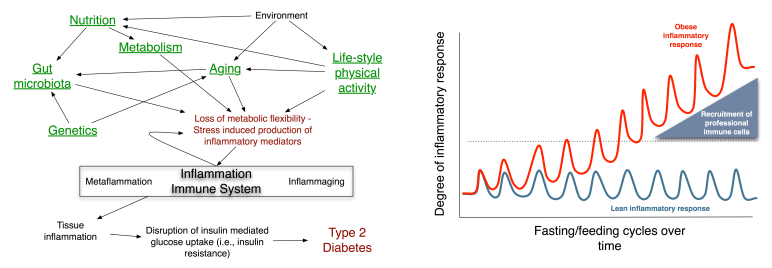Figure 3.
Left: Relationships between the concepts to be modeled in MISSION-T2D: Each aspect will be taken into account either through empirical data or via modeling, with submodels built up into a single integrated model. This will take as input information from genetics, nutrition, age, physical activity habits, and gut microbiota to elaborate a patient-specific risk assessment for the onset of T2D. Right: The pulsatile inflammatory response during feeding, showing differences between the responses of normal and obese individuals’ reactions over time: Fasting/feeding cycles induce low-level inflammatory responses in the metabolic cells of average-weight, healthy individuals that are easily resolved. During the high-fat diet or excess feeding that results in obesity, responses to food become more intense and frequent, and the resolution of the inflammatory response becomes less efficient, raising the baseline level of inflammation in metabolic tissues. Once the level of inflammatory response reaches a certain threshold in the metabolic cells, professional immune cells are recruited and activated. The participation of these cells in the inflammatory response alters the tissue environment toward a proinflammatory milieu and exacerbates the inflammation even further [14].

